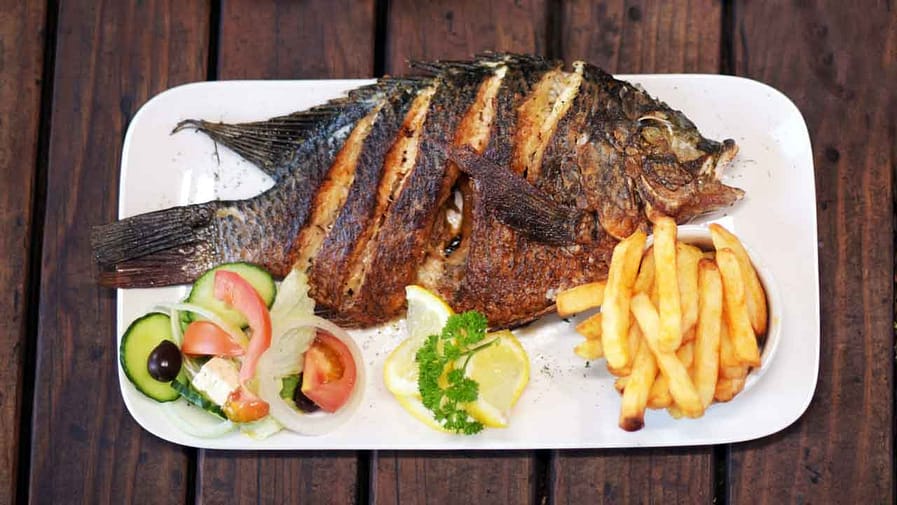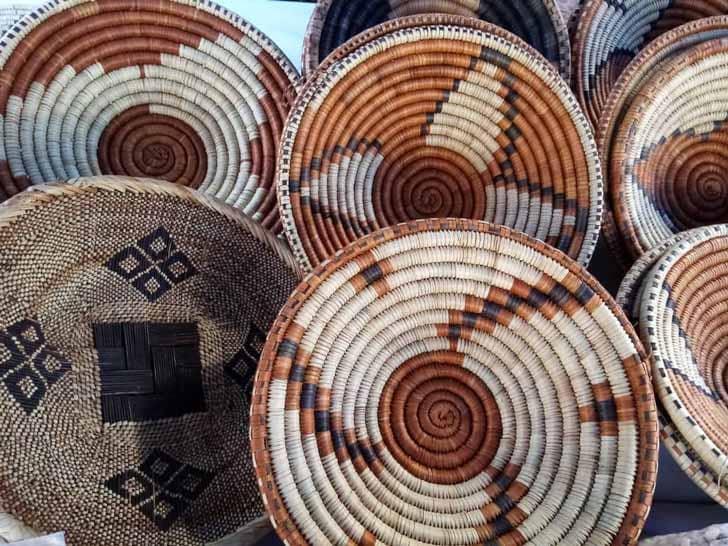Cuisine
Meals in Chobe are all freshly prepared. The lodges pride themselves on their personalized services and this includes your culinary preferences and needs. The food is tantalizing and will leave you yearning for more traditional foods and drinks. The signature food is the tasty Chobe bream which is unique to Chobe, and has always been part of the cuisine. Out in the bush, the fish is roasted over hot coals of an open-air fire in the same way that you do with beef.

Basketry
The knowledge of basket weaving has been passed down from mothers to daughters from generation to generation. The baskets are made from leaves of mokola palm trees which are native to the region. They are adorned with various patterns created by interweaving leaves colored with natural dye from indigenous plants. The people of Chobe used to make baskets for home use, but nowadays, the baskets are available to tourists from around the world.

Setapa dance
Setapa is a celebratory dance that originates from the Bangwaketse of South-East Botswana. The dance marked the community ceremonies such as good harvest, welcoming returning hunters or warriors. The dancers, in pairs performed in the middle of a circular formation of singers and clappers. Like most traditional dances, a small metal whistle is used to spice the performance. In the Chobe, this setapa is performed by troupe based in Kasane in lodges to entertain guests.

Seperu dance
Seperu dance is a celebratory dance performed by the Vekhuane (Basubiya) to mark ceremonial occasions such as the coronation ceremony of a chief, birthdays, weddings, the harvest and the arrival of special guests. Woman dancers wear a special bright multi-layered dress (mushishi) whose dance moves exposes the layers beneath as the woman swings her torso. The male dancer who leads the dancers usually carries a flywhisk and the whistle. Forming a circle, the vocalists sing and clap hands while dancers performed.

Diware dance
Diware dance is a Hambukushu healing dance ritual found mainly around like Maun, Gumare, Etsha, and Kasane. At the heart of diware dance is a traditional healer who revives or heals a patient. The women form a horse-shoe circle, clapping hands and singing Tjmbukushu healing songs for the medicine man who work to heal the sick. The climax of the performance is when the sick person is healed and immediately joins the performance in celebration.